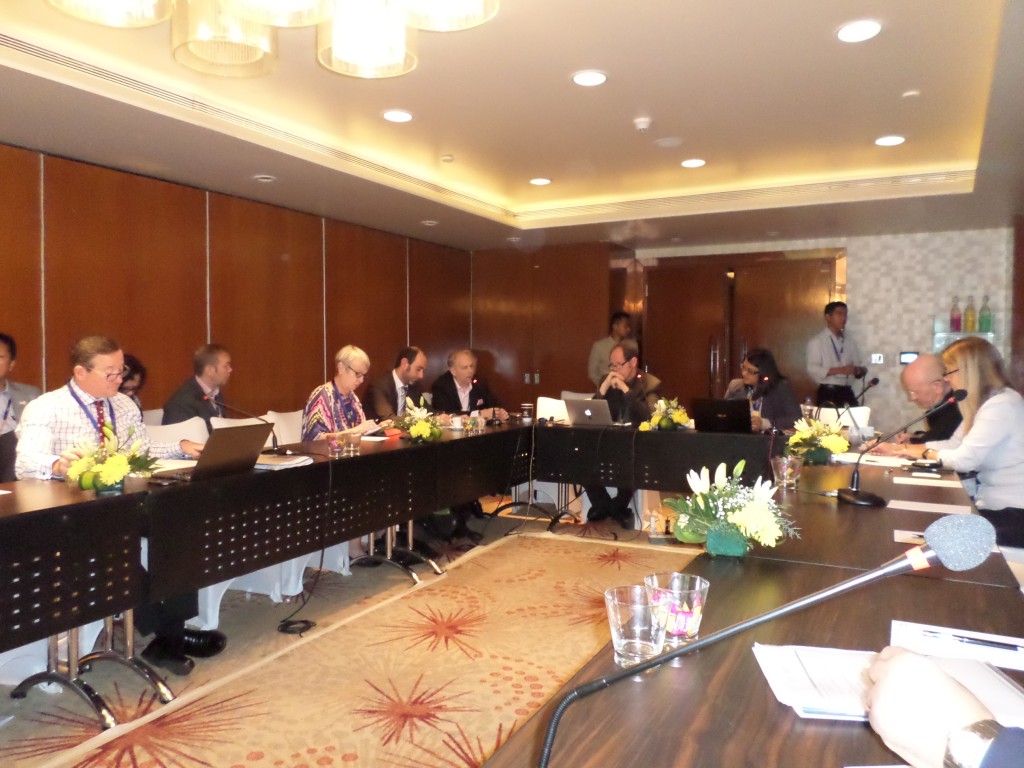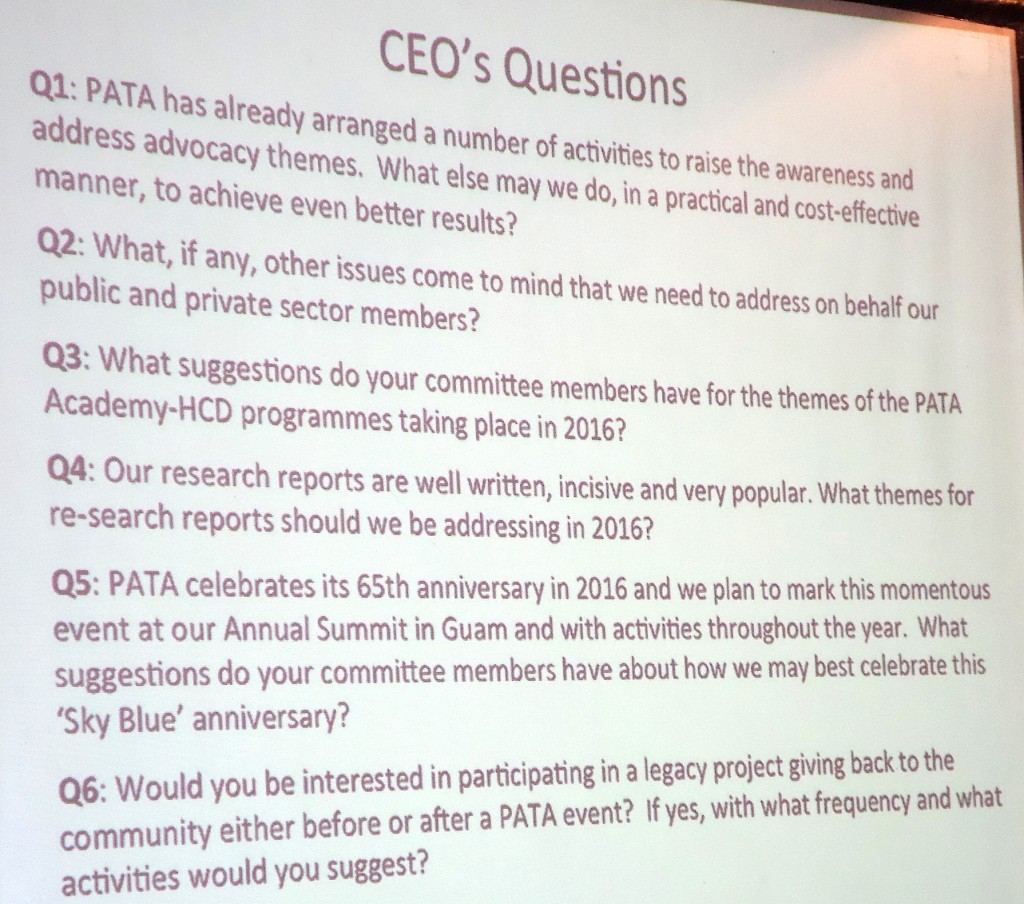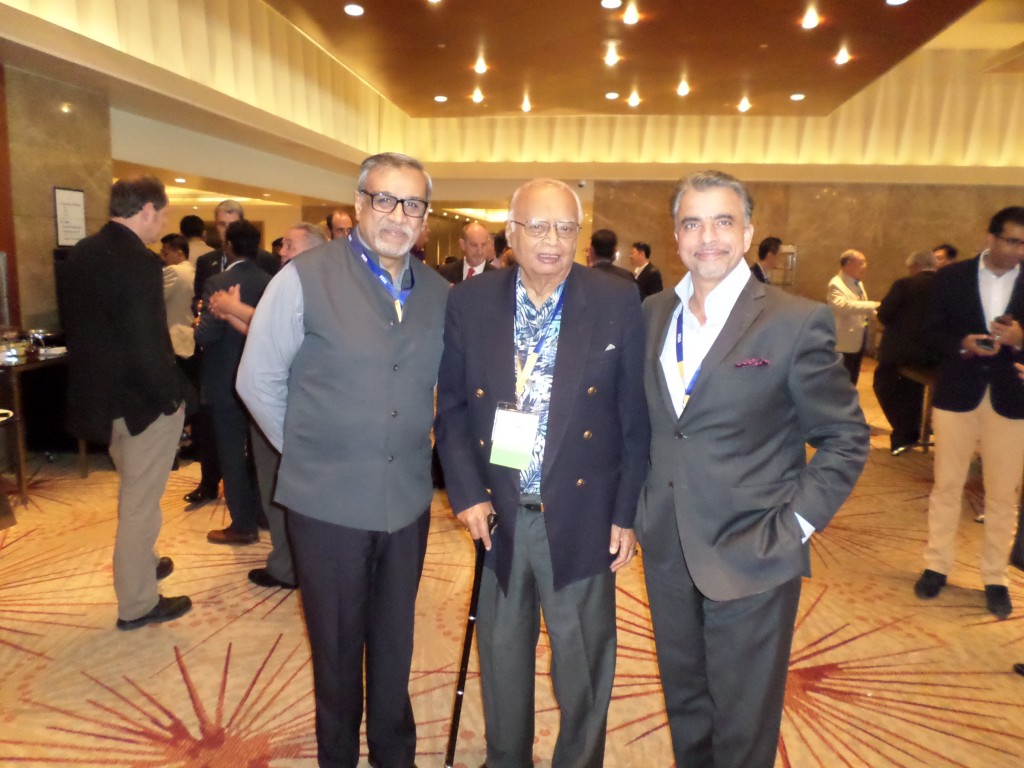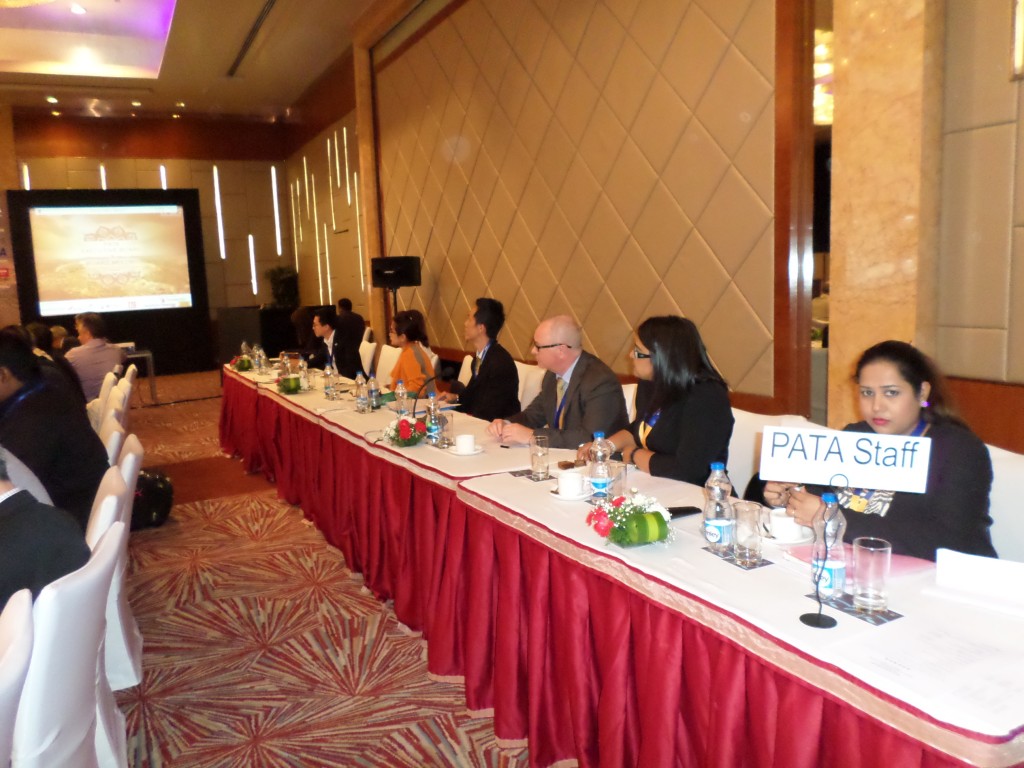
21 Sep, 2015
Next on PATA’s reform agenda: Revamping the roster of unproductive meetings
Bengaluru — As the PATA turnaround gains steam, charting the future of its legacy committees, colloquiums and councils is emerging as a priority item on the reform agenda. The long overdue need for this became obvious during the many meetings accompanying the Bengaluru PATA Travel Mart. They were hugely disparate in terms of attendance, relevance and the level of interest. If the sum total of the time, costs and effort that went into organising them, especially by the PATA staff, is weighed against the sum total of their meaningful output, the results may well speak for themselves.
Over a span of five days (Sept 4-8), the suite of PATA events included one youth symposium, one chapters colloquium, six committees and one industry council meetings, two forums for investment and technology, plus three “PTM Talks” and the trade show itself. There were additional meetings of the Board, Executive Board, PATA Foundation, Nominating Committee, Honours Committee and the Finance Committee. To varying degrees, the format, composition and structure of the committees dates back more than two decades when PATA was The Place to gain insights into issues and trends, and Asia was more an inbound destination. PATA members jockeyed for a seat at what were considered to be prestige spots, giving them access to “inside information” as well as more cosy networking opportunities. All that has changed, but the legacy structure lives on.
This editor attended many of the meetings and forums. In line with the winds of change blowing through PATA and the new maximum-transparency policy, the media now has access to most meetings except those related to internal PATA matters. While their individual news-value was minimal, the publicly-open meetings and forums collectively could be clearly evaluated within the broader context of the PATA agenda. Some were brimming with energy and enthusiasm; others didn’t seem to know why they were still in existence.
There was plenty of high-octane enthusiasm at the Youth Symposium held at Christ University on Sept 4. Like in all such symposiums organised at various universities and training institutions since 2010, the focus was clear: Young people are primarily interested in getting jobs and need to understand their future challenges and opportunities. Christ University has students from 53 countries, which made the roughly 200-strong attendance at the Symposium even more culturally colourful.
After the presentations by Tourism Malaysia, Dorsett Hospitality, Safehotels Alliance and the chairman of the PATA Human Capital Development Committee, the students indulged in round-table discussions on three very relevant questions: What do you believe makes a great tourism employee? How will your job in tourism change in the next ten years? In what ways could we enhance respect for a career in tourism? Both, the speakers and the students, came away with very tangible takeaways. The entire session was upbeat, interactive and stimulating, with the students being the primary beneficiaries.
Later the same day, the chapters meeting went in the other direction. Only four chapters were present, about half the number at the previous chapters forum at the PATA annual summit in Leshan, China, in April 2015. The discussion was largely the same as in previous meetings — raising PATA’s brand value, attracting more members and improving communications between chapters and the head office.
PATA had been hoping for a higher attendance. PATA CEO Mario Hardy opened the session by noting that he was now ready to devote time and energy to rebuilding the chapters. In line with that, Ms Halona Padiachy, the newly appointed membership and chapter relations manager, did some dipstick research via round-table discussions to get feedback on what PATA is doing well, what it needs to do and other such topics designed to make the chapters agenda more relevant. After nearly one hour of brainstorming, the outcome didn’t yield much that PATA didn’t already know.
 The sustainability committee in session |
This editor then attended the Human Capital Development (HCD) and Sustainability committees. Recognising their role as the “voice” of PATA, Mr Hardy had sent out a list of six questions he wanted committee members to consider to guide his advocacy agenda. None of this was discussed. Both committees are in the process of refreshing their terms of reference. The HCD committee attracted only four participants, and 12 observers. In both, by the time participants finished introducing themselves, approving the minutes, studying the terms of reference, discussing the composition of the committee and listening to various reports, time had run out. It was then decided that the CEO’s questions would be emailed to the committee members. The CEO could have done that himself.
 The questions posed to the committees by PATA CEO Mario Hardy. |
The Government/Destinations category meeting overlapped with the Hospitality committee meeting. This editor attended the former. Its chairman, Dato Azizan Noordin of Tourism Malaysia pushed the CEO’s questions to the top of the agenda and hence gave them some traction. But due to the number of items on the agenda and the 90-minute time allocation, the feedback was not as detailed as it could have been.
The committee did hear two excellent presentations. One was by ForwardKeys on India outbound to the Asia-Pacific and how bookings get impacted by developments such as the Aug 17 bomb attack in Bangkok and the April 2015 Nepal earthquake. This was of great interest to the government members as it was tangible, practical information. Another presentation by Boeing outlined trends driving traffic growth to Asia, especially in the aviation sector. Neither of the two presentations contained any confidential information. In fact, they were of significant relevance to the wider membership. Had the Boeing presentation been made in the Youth Symposium, it would have attracted many young people to seek jobs in the aviation sector, which is also facing HRD issues.
The Industry Council meeting overlapped with the Aviation committee meeting. This editor attended the former, which also had a 90-minute time limit. The Industry Council, which represents the private sector, attracted the highest attendance — 12 members had registered but 20 turned up.
 PATA Life Member and former chairman Inder Sharma was a welcome presence at the Bengaluru PTM, flanked here by San Jeet of Durga Das Publications (left) and Vikram Madhok of Abercrombie & Kent. |
Historically, this has been one of PATA’s most vocal bodies. The chairperson, Ms Sarah Mathews of TripAdvisor, did not attend for family reasons, but the acting chairperson, Ms Anna Hong of Hong Kong, noted that it was important for the council to produce tangible deliverables. That raised the question: Deliverables on what, which then required a discussion on what should be discussed. So the chairperson asked members to share thoughts and ideas on the deliverables. As in the Chapters Colloquium, the same issues came up yet again – how to make PATA relevant, attract more members and retain existing ones, adapt to a changing environment, better communicate the benefits of membership, etc., etc.
Members noted that PATA needed to focus, separate the global and local issues, and not try to be all things to all people. They called for better use to be made of the feedback and evaluation forms generated after each meeting. There were calls to avoid reinventing the wheel, to pay greater heed to PATA’s strengths, and to go back to the basic mandate of PATA. Mr. Basant Mishra of Nepal said, “We did not survive for nothing.” Singapore’s Mr. Tan Chee Chye noted that PATA had lost its momentum when a number of major NTOs dropped out.
Everyone agreed on what should be done next. Not a single member called for a closer post-mortem evaluation of what went wrong.
Some comments went right to the heart of the PATA reform agenda A Japan chapter representative said membership had been more than 250 in 1999 and was now down to only 50. One of the influential members, Japan Airlines, dropped out after the 2007-08 financial crisis and is reluctant to return because it sees little value. On the flip side, Taufiq Rahman of the Bangladesh chapter said it had gone from 12 to 35 HQ members in recent years and was planning for at least 50 this year. Although many members are asking what benefit they get, beyond just use of the PATA logo, the interest is there. Bangladesh, he said, is set to become a major player in tourism and needs help with strategic marketing, capacity building and training.
The council chairperson thanked the members for their ideas which she said would prove useful to PATA. Given the fact that she had attended three previous Industry Council meetings, and heard the same things being repeated at nearly all, it was time for some more meaningful discussions in future, she said.
 Some of the PATA staff at the Board meeting |
More energy and enthusiasm was on show at the Technology Forum where representatives of India’s online travel agencies strutted their stuff. The equivalent of Toys R Us conventions, technology forums always attract crowds. It’s a question of survival. People want to know how prevailing trends will impact their businesses, what new technologies and business models are emerging and how to take advantage of them.
By contrast, the investment forum was humdrum, dominated by the usual roster of advertorials by Indian states outlining their plans to attract tourism investments, and investors complaining that not enough is being done to attract investments.
From one meeting to the next, the differences were stark between those events and forums which delivered the ideas, insights, intelligence, education and networking opportunities that PATA members seek, and those which were an unproductive waste of time. PATA Chairman Kevin Murphy, in his remarks to the Board meeting, alluded to this when he said, “We need to continue to reexamine our congress and meeting opportunities to allow greater dialogue that many of you have called for, and opportunities to allow for that interaction.”
Mr. Murphy noted that while PATA has turned the corner, members are calling for more service and better value. He urged the members to become better acquainted with the many services that PATA does in fact offer. He said PATA needs new ideas and new blood while benefitting from the valuable contributions industry supporters and stalwarts have made in driving PATA forward.
He also cited the stress on time, clearly the over-arching determinant. The committees, chapters and one council meet just twice a year, for a princely total of roughly three hours each. Their agenda items and terms of reference indicate they are trying to overachieve. Each meeting requires enormous amounts of administrative preparation. After their meetings, the committees and councils are given three minutes each to summarise their discussions for the Board. Compiling that summary means more time expended by either the chairperson or a PATA staffer. All the summaries take up about 30 minutes, or about 25% of a two-hour Board meeting. In terms of tangible, value-for-time results, they deliver virtually nothing.
Deciding who sits on the committees is another grey area. When they were set up, the committees were capped at a specific size, with two-year terms for each member in order to allow fairer distribution of opportunity and injection of new blood. It does not always work out that way. In the sustainability committee, for example, it was quickly noticed that there was an overwhelming majority of non-Asian expats, mainly Europeans and Americans. Most were representatives of aid agencies either operating or seeking consultancy work.
The spread of meetings and forums also leads to much duplication and redundancy. Little of what is being discussed in the HCD, government, aviation, hospitality and sustainability committees is not already being discussed by dozens of other forums in Asia and beyond. Then there is the question of availability of resources to action the decisions. As none are available, Peter Semone, chairman of the PATA Foundation, an American working on a Luxembourg-funded tourism training school in Laos, said money from the Foundation was available to execute worthwhile projects.
Logistical challenges at the host destination put further stress on time. Christ University was 1.5 hours drive away from the main hotels. The Chapters Colloquium and the various committees were in the main Sheraton hotel. The investment and technology forums and PTM Talks were at the Bangalore International Exhibition Centre, 30 minutes away from the hotels.
Although these were all on different days, there was a lot of overlap. The PTM Talks, for example, were built into the programme of the actual trade show which made it difficult for interested buyers and sellers to attend. The shuttle services did not start operating until the start of the Travel Mart. Not all delegates, especially the sellers, could afford to stay in the centrally-located hotels. Either way, everyone had to decide whether and what to attend, and weigh that against the returns, the overall time away from the office and the associated costs.
Some relief may come after an under-way rationalisation process is complete. Mr. Hardy said the Executive Board had endorsed streamlining the membership structure. PATA now has 47 categories and sub-categories of membership, which are to be reduced to 16. That will not be easy, but Mr. Hardy said he would have the suggested revamp ready for possible approval by the next PATA summit in Guam in May 2016.
PATA claims to be the “voice” of Asia-Pacific travel & tourism, the only association to bring together all the industry components under one roof. Its roster of events and activities are designed to help members broaden their knowledge and contact base, solve problems, meet targets, understand trends, and have fun at the same time. Asia-Pacific travel & tourism grew robustly because PATA facilitated all of the above. Now, with the entire industry changing, and many new channels of communications and networking emerging, revamping, and if necessary, purging the unproductive, time-wasting meetings may be a surgical necessity in order to ensure that PATA starts delivering value for time and money.




Liked this article? Share it!